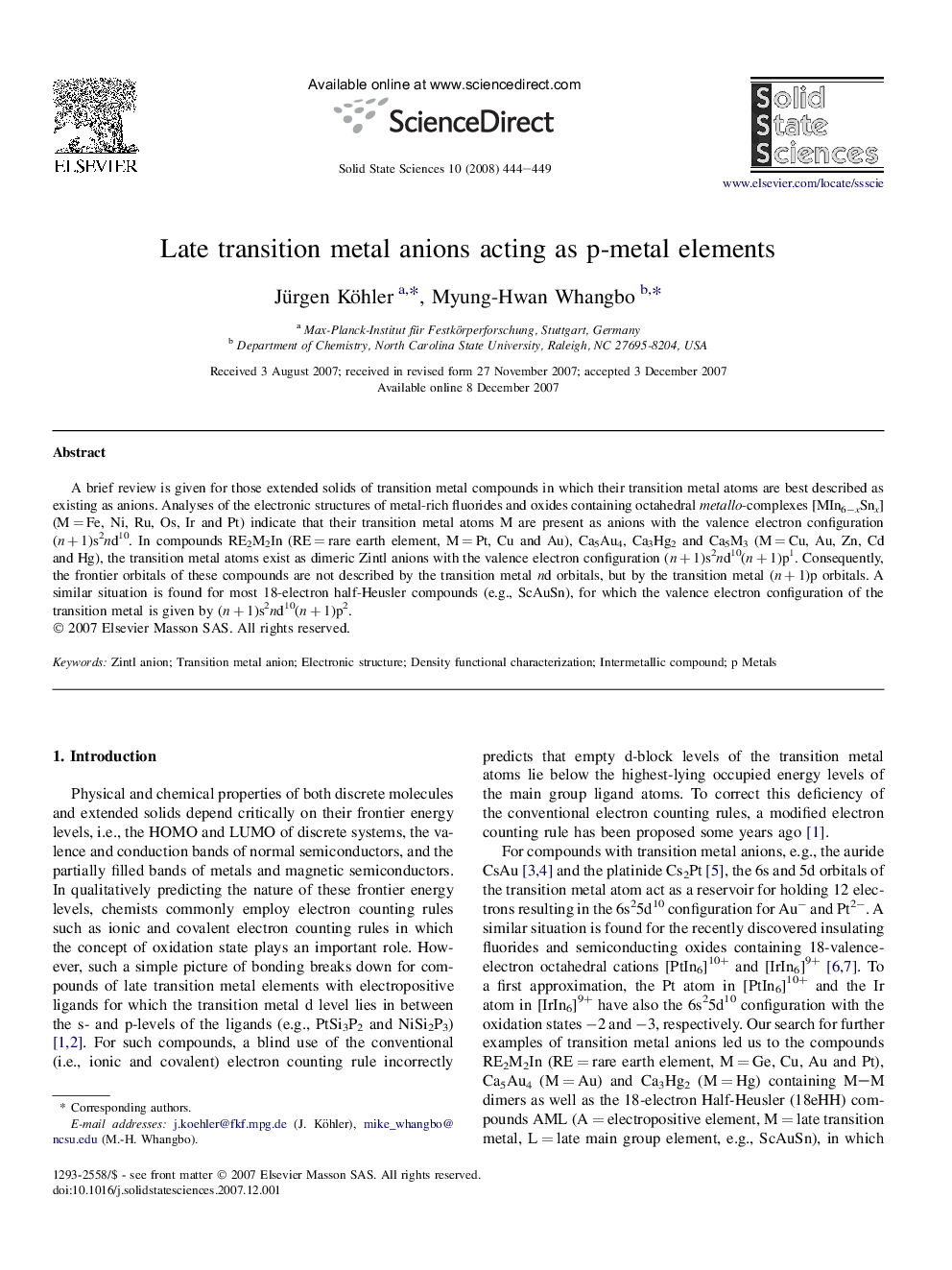| Article ID | Journal | Published Year | Pages | File Type |
|---|---|---|---|---|
| 1506988 | Solid State Sciences | 2008 | 6 Pages |
A brief review is given for those extended solids of transition metal compounds in which their transition metal atoms are best described as existing as anions. Analyses of the electronic structures of metal-rich fluorides and oxides containing octahedral metallo-complexes [MIn6−xSnx] (M = Fe, Ni, Ru, Os, Ir and Pt) indicate that their transition metal atoms M are present as anions with the valence electron configuration (n + 1)s2nd10. In compounds RE2M2In (RE = rare earth element, M = Pt, Cu and Au), Ca5Au4, Ca3Hg2 and Ca5M3 (M = Cu, Au, Zn, Cd and Hg), the transition metal atoms exist as dimeric Zintl anions with the valence electron configuration (n + 1)s2nd10(n + 1)p1. Consequently, the frontier orbitals of these compounds are not described by the transition metal nd orbitals, but by the transition metal (n + 1)p orbitals. A similar situation is found for most 18-electron half-Heusler compounds (e.g., ScAuSn), for which the valence electron configuration of the transition metal is given by (n + 1)s2nd10(n + 1)p2.
Graphical abstractFigure optionsDownload full-size imageDownload as PowerPoint slide
